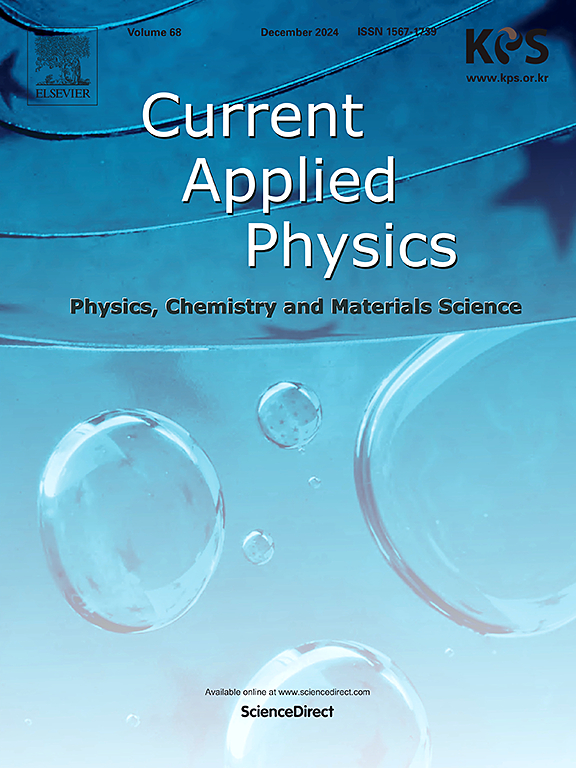Selective hydrogen molecule dissociation on Ca2N monolayer
IF 3.1
4区 物理与天体物理
Q3 MATERIALS SCIENCE, MULTIDISCIPLINARY
引用次数: 0
Abstract
The development of efficient hydrogen conversion and storage technologies is critical for sustainable energy systems. We report the remarkable discovery of barrierless hydrogen dissociation on dicalcium nitride (Ca2N) monolayers through density functional theory calculations and ab initio molecular dynamics simulations. Our investigations reveal that molecular hydrogen adsorption occurs exclusively at a bridge site between calcium atoms (site B), while dissociated hydrogen atoms preferentially migrate to a calcium-centered hollow site (site A). Importantly, our simulations demonstrate a self-regulating mechanism wherein initial H2 dissociation at B-sites inhibits subsequent molecular hydrogen adsorption, effectively controlling the dissociation process. The absence of an activation energy barrier indicates an exceptionally favorable thermodynamic pathway for hydrogen dissociation under ambient conditions. These findings establish pristine Ca2N monolayers as promising candidates for catalyzing hydrogen evolution reactions and other hydrogen-related energy applications, offering a novel direction for the development of electride-based catalysts with unprecedented hydrogen activation properties.

氢分子在Ca2N单层上的选择性解离
开发高效的氢转化和储存技术对可持续能源系统至关重要。我们报告了通过密度泛函理论计算和从头算分子动力学模拟,氮化二钙(Ca2N)单层上无障碍氢解离的显著发现。我们的研究表明,分子氢吸附只发生在钙原子之间的桥位点(位点B),而解离的氢原子优先迁移到钙中心的空心位点(位点a)。重要的是,我们的模拟证明了一种自我调节机制,其中b位点的初始H2解离抑制随后的分子氢吸附,有效地控制了解离过程。没有活化能势垒表明在环境条件下氢解离的热力学途径非常有利。这些发现确立了原始Ca2N单层膜作为催化析氢反应和其他氢相关能源应用的有希望的候选者,为开发具有前所未有的氢活化性能的电极基催化剂提供了新的方向。
本文章由计算机程序翻译,如有差异,请以英文原文为准。
求助全文
约1分钟内获得全文
求助全文
来源期刊

Current Applied Physics
物理-材料科学:综合
CiteScore
4.80
自引率
0.00%
发文量
213
审稿时长
33 days
期刊介绍:
Current Applied Physics (Curr. Appl. Phys.) is a monthly published international journal covering all the fields of applied science investigating the physics of the advanced materials for future applications.
Other areas covered: Experimental and theoretical aspects of advanced materials and devices dealing with synthesis or structural chemistry, physical and electronic properties, photonics, engineering applications, and uniquely pertinent measurement or analytical techniques.
Current Applied Physics, published since 2001, covers physics, chemistry and materials science, including bio-materials, with their engineering aspects. It is a truly interdisciplinary journal opening a forum for scientists of all related fields, a unique point of the journal discriminating it from other worldwide and/or Pacific Rim applied physics journals.
Regular research papers, letters and review articles with contents meeting the scope of the journal will be considered for publication after peer review.
The Journal is owned by the Korean Physical Society.
 求助内容:
求助内容: 应助结果提醒方式:
应助结果提醒方式:


